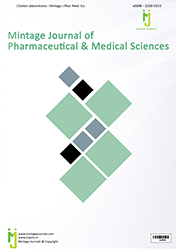COMPUTATIONAL CHEMISTRY: UNVEILING THE SECRETS OF MOLECULES WITH ALGORITHMS AND SIMULATIONS
Commentary - (2023) Volume 12, Issue 2
Description
Computational chemistry is a cutting-edge field that marries the power of computer algorithms with the principles of quantum mechanics to explore the properties and behaviours of molecules. It has revolutionized the way scientists understand chemical systems, paving the way for drug discovery, material design, and environmental studies. In this article, we delve into the fascinating world of computational chemistry, its applications, and how it complements experimental research to shape our understanding of the molecular universe.
At its core, computational chemistry involves the use of mathematical models and simulations to investigate the structure, dynamics, and energetics of molecules. It relies on fundamental principles of quantum mechanics to describe the behaviour of electrons and atoms, enabling researchers to predict and understand the properties of complex chemical systems. By solving complex mathematical equations, scientists can simulate chemical reactions, study molecular interactions, and explore the properties of new materials before ever stepping foot into a laboratory.
One of the most significant applications of computational chemistry is in drug discovery and development. Pharmaceutical companies use computational tools to screen vast databases of potential drug candidates, predicting their interactions with specific proteins or enzymes. These simulations help identify promising compounds that can be further tested in the laboratory, significantly accelerating the drug development process and reducing costs.
Additionally, computational chemistry is instrumental in understanding enzyme catalysis, which is crucial for developing enzyme-based therapies and designing more efficient industrial processes. By simulating enzyme-substrate interactions, researchers gain insights into the underlying mechanisms of catalysis, enabling the design of custom enzymes tailored for specific applications.
Another critical application of computational chemistry lies in materials science. Researchers can predict the properties of new materials and optimize their structures for specific applications, such as designing more efficient solar cells, lightweight materials for aerospace, or improved catalysts for chemical reactions. This approach accelerates material discovery and reduces the need for costly trial-and-error experiments.
Environmental studies also benefit from computational chemistry. Understanding the behaviour of pollutants, atmospheric reactions, and the interactions of molecules with environmental surfaces is crucial for mitigating pollution and developing sustainable solutions. Computational models aid in predicting the fate and transport of pollutants, providing valuable information for environmental remediation strategies.
Computational chemistry techniques can be broadly classified into two main categories: Quantum mechanics-based methods and molecular mechanics- based methods. Quantum mechanics-based methods, such as ab initio and Density Functional Theory (DFT), solve the Schrödinger equation to describe the electronic structure of molecules accurately. These methods are highly accurate but computationally intensive and are generally limited to small systems. The success of computational chemistry relies on advancements in computer hardware and software. With the exponential growth in computational power over the years, researchers can now perform simulations on supercomputers and high-performance computing clusters.
In conclusion, computational chemistry has emerged as a transformative tool in the study of molecules and chemical systems. Through sophisticated algorithms and simulations, researchers gain unprecedented insights into molecular behaviour, enabling advancements in drug discovery, materials science, and environmental studies. As computing technology continues to evolve, the future of computational chemistry holds even greater promise, unlocking the secrets of molecules that have the potential to shape our world in remarkable ways.
Acknowledgement
The authors are very thankful and honoured to publish this article in the respective Journal and are also very great full to the reviewers for their positive response to this article publication.
Conflict Of Interest
We have no conflict of interests to disclose and the manuscript has been read and approved by all named authors.
Author Info
Kile Johnson*Received: 30-May-2023, Manuscript No. mjpms-23-108289; , Pre QC No. mjpms-23-108289(PQ); Editor assigned: 01-Jun-2023, Pre QC No. mjpms-23-108289(PQ); Reviewed: 15-Jun-2023, QC No. mjpms-23-108289; Revised: 20-Jun-2023, Manuscript No. mjpms-23-108289(R); Published: 27-Jun-2023, DOI: 10.4303/mjpms/236044
Copyright: This is an open access article distributed under the terms of the Creative Commons Attribution License, which permits unrestricted use, distribution, and reproduction in any medium, provided the original work is properly cited.

ISSN: 2320-3315
ICV :81.58

